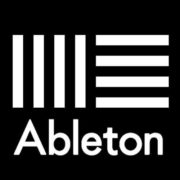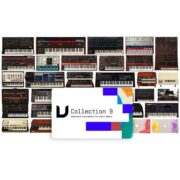Before I give my verdict on whether Ableton Live is easy or hard, I will let you see the opinion of industry legends. This is an interaction between Kenny Beats (producer) and Doja Cat (recording artist) during a freestyle recording and production session, The Cave: Episode 7 hosted by Kenny Beats. This is what they said when discussing Ableton Live and Logic:
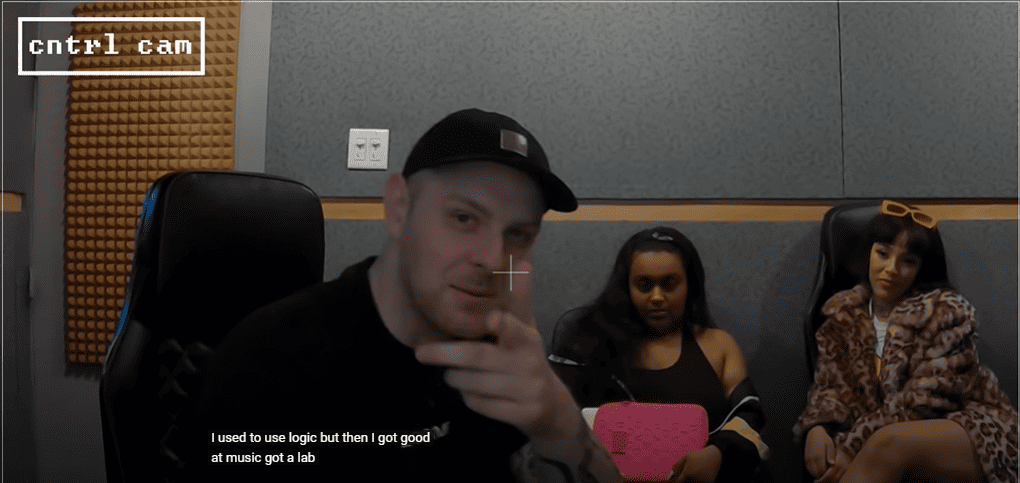
Kenny Beats Says, “he used to use Logic, but then I got good at music…”. Doja follows this by saying that Live is scary and looks like a spider. Kenny follows this up by saying that his transition to Live was advised by the speed and simplicity the Live Provides.
Kenny Beats’ reasoning behind stitching to Live from a different DAW is the same reason I moved to Live from Fruity Loops. Early in my career, I used to use FL Studios for a few months in 2014. I got to learn about Live on music production blogs and communities, and after 48 hours of using Live, I made the switch immediately, and never looked back!
Live is now my production bread and butter. This is because Live has a very simple and easy learning curve, and if you learn one thing, it inspires you to learn a more efficient way to handle your production sessions! That being said, there were some challenges that I ran into when learning to use Live. Here is why:
Easy: Live comes with a quick info window that when you enable it, will give you all the information of all the functions and parameters of the effect you are hovering over. Also, switching between tabs is very easy, simply because of the shortcuts available to you in Live, the plug-ins, effects and folders available to you in the Live browser, ease of external hardware setup, 3rd party plug-in effects load ups and additions, automation creations, new track creation, exporting and export settings setup, among many many more.
Hard: Live’s learning curve may be hard to learn, especially when it comes to setting up audio editing software, solving crashing and lagging issues, opening sessions from older versions of Live, creating and synchronizing play orders for a live performance, and using the Sampler sampling instrument.
Why Ableton is Easy to Learn
There are many reasons to love using Live and more reasons Live users tell you why it’s very easy to get started with Live. In this segment, I will give you certain functions, tips and tricks that I found quite easy to learn to enhance my production processes. Let us get into it!
Info View
This is a tiny text box that can be viewed by opening the info view tab. This text box is opened when you click the info view toggle at the bottom left corner of Live. This text box will provide you with a brief description of the user interface parameters your mouse is currently hovering over.
You can also add descriptions to your audio and MIDI clips in your session. These notes can be information about changes you have made or intend to make, effects, parameters, or some information about the selected clip that would normally be included in a production logbook. This is how you can do this:
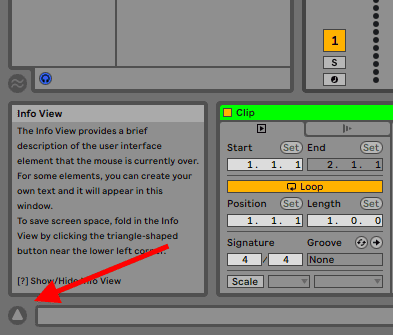
Step 1: Select the clip you want to insert information about, right-click on it, and select Edit Info Text.
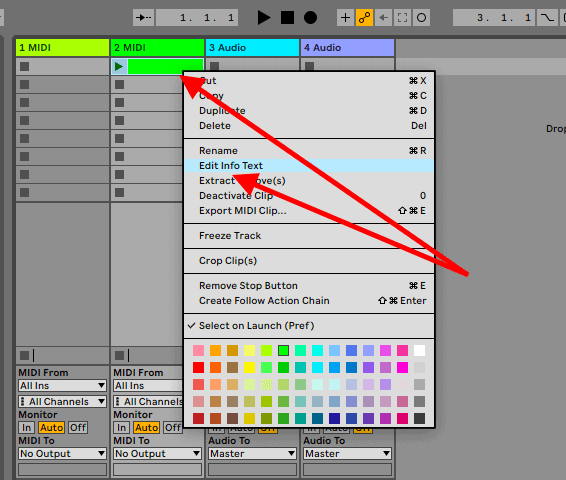
Step 2: Write the text that suits your currently selected clip

Layout
The most inviting this I found about Live was its simplistic user interface design. Live opens upon start with 2 audio and 2 MIDI tracks, two send tracks already loaded with a reverb and delay, and a master track.
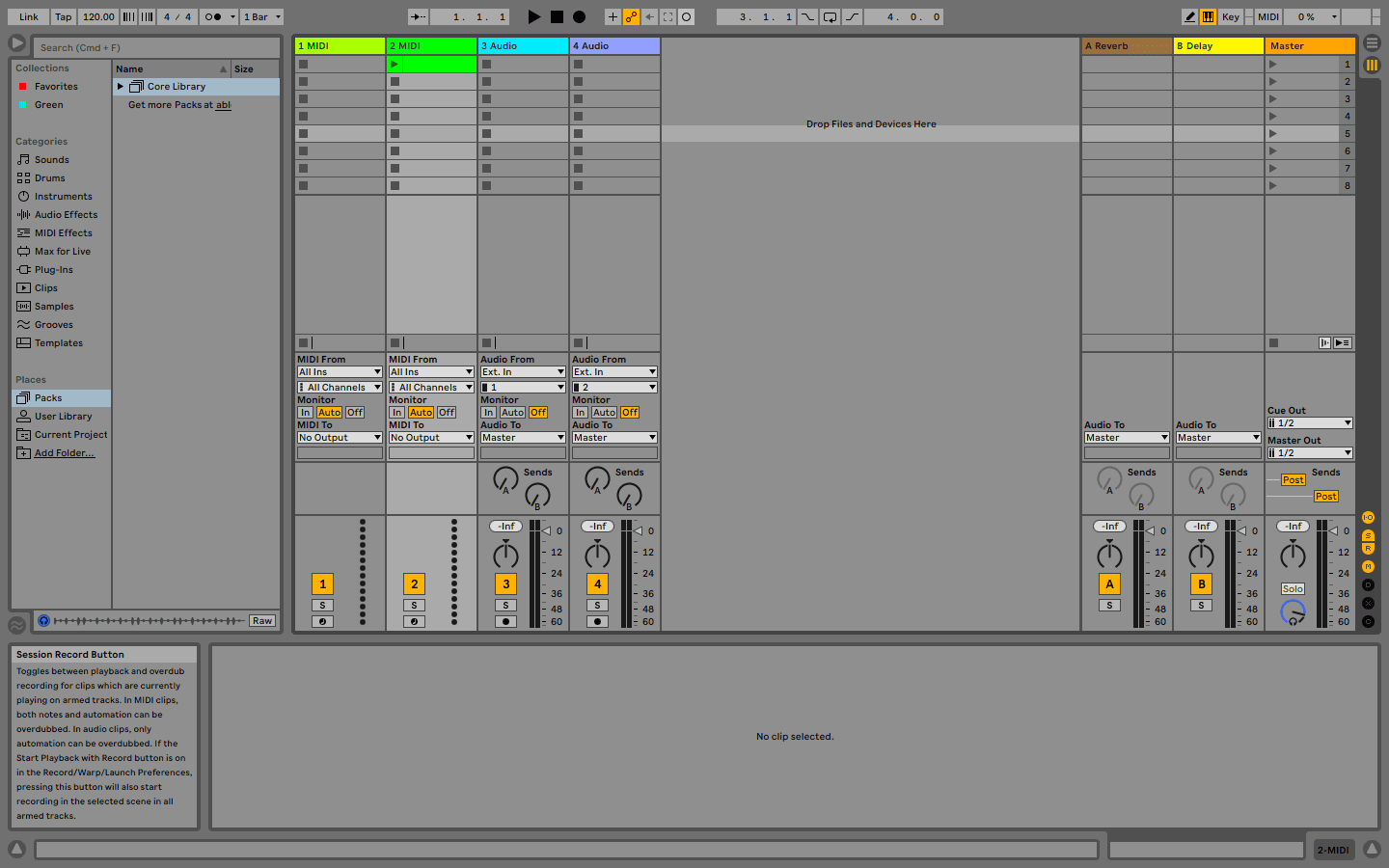
You can simply switch between mix and arrangement views using the Tab button or the view toggle, and the parameters that are visible in the mix view, are the same as in the arrangement view. These parameters are displayed differently but are intuitively placed and labelled as the tracks are switched from a vertical placement to a horizontal placement in the arrangement view.
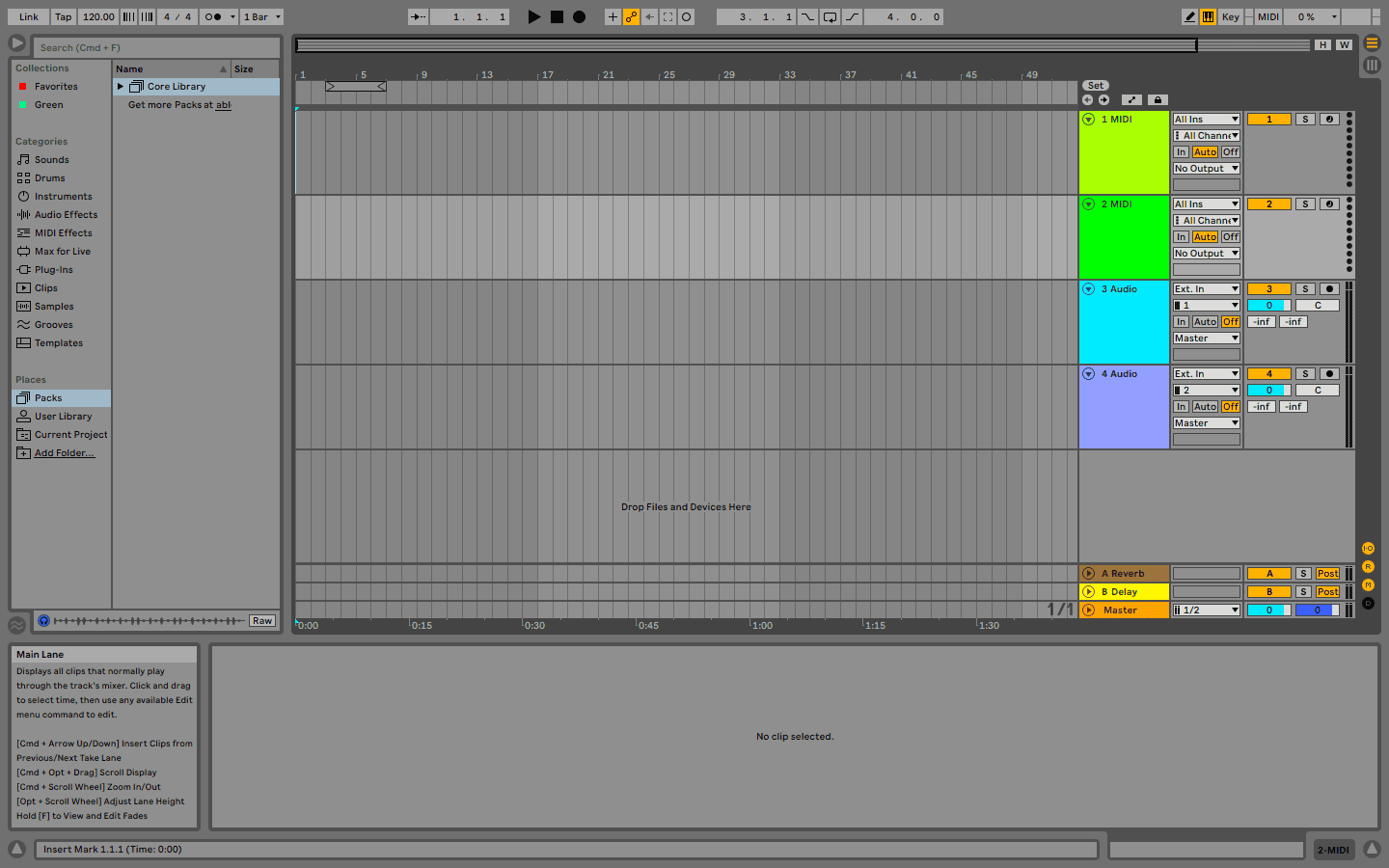
The browser layout is another factor that made learning Live easy for me. The browser contains all virtual instruments, effects, sounds, plug-ins and other production files neatly arranged and accurately labelled. If you cannot find a specific file in a folder, you can select the main folder and search for what you are looking for. You can also add your custom folders to Live, which I use for all my custom sounds and samples.

Finally, the ability to expand and collapse the browser, clip editor and info tab creates space in your mix and arrangement view. This focus on clips enhances my engagement with my sessions when arranging or in a live performance. This can be done by the 3 expand and collapse toggles in Live here:
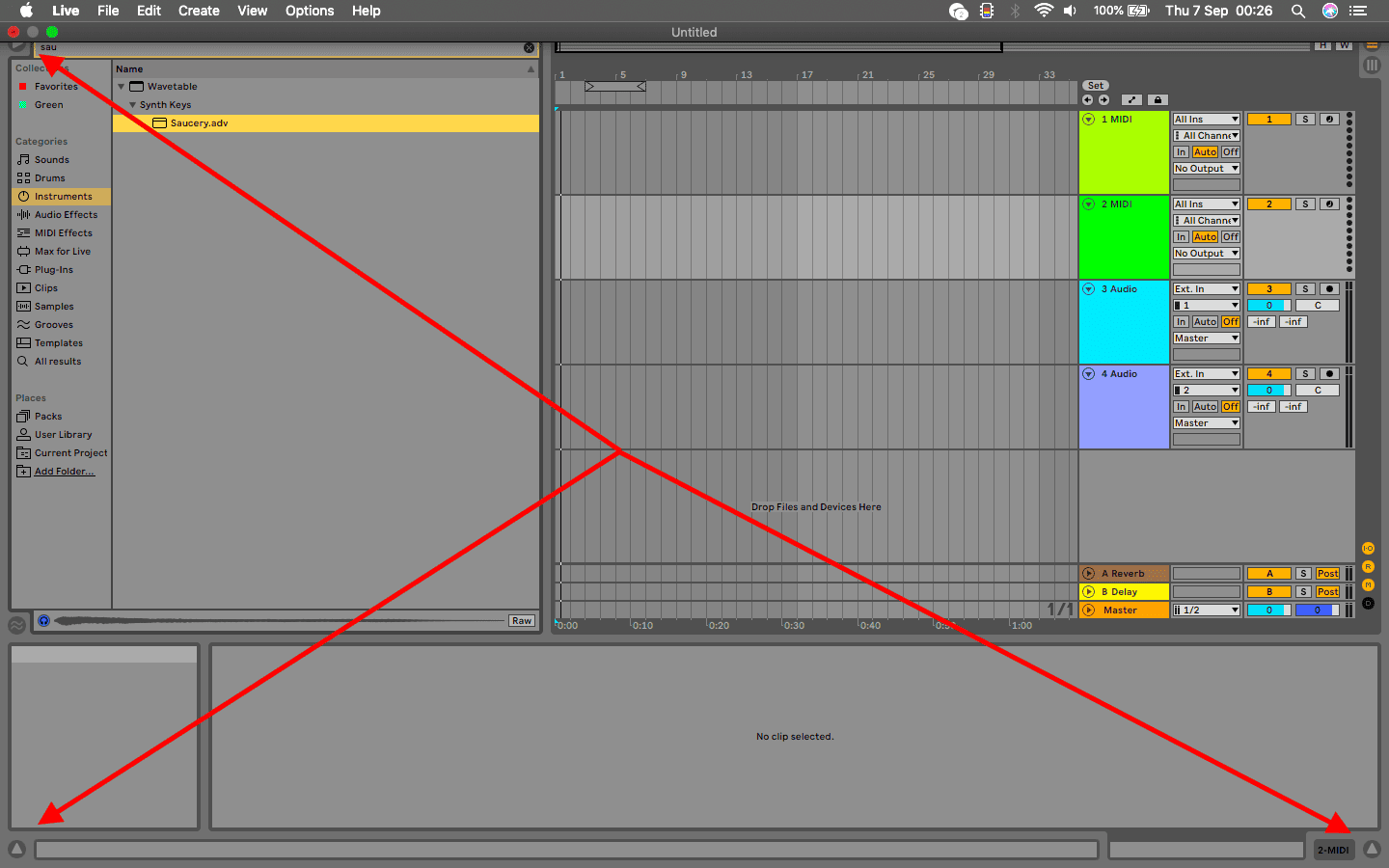
Shortcuts
If you have used software such as Microsoft Office, you will be using shortcuts to copy, paste, cut and duplicate text. These shortcuts function the same way they do on Microsoft Office on Live with tracks, recorded clips, notation, automation, loaded effects and by pressing M on your keyboard to mute a clip or notation in MIDI clips. This mute function is very useful when arranging your song or editing your clip in the composition stage of production.
Why Ableton is Hard to Learn
Despite the speed and ease of Live, there are certain production techniques and troubleshoots that may be difficult to learn to solve an issue in Live or enhance your productions and performances. Let me detail some of the difficulties I came across when learning how to use Live:
Missing Media Files
In my tutorial on how to retrieve missing media files, I discussed the consequences that may come as a result of missing media files in your sessions. This can range from lost time finding and importing your files to losing your job or a client due to unreliability from your end. Missing media files in your session will look like this:
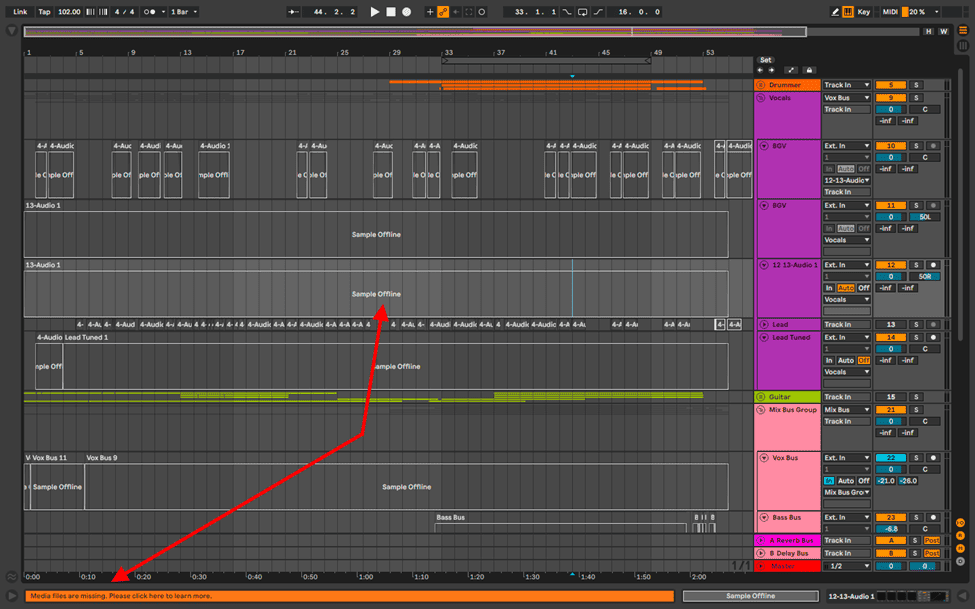
There are several techniques I have highlighted in the article referenced above, that will help you resolve media files. There is also the collect all and save technique that I became privy to a few weeks into my experience with Live that has saved me time and time again, especially when using samples. Unlike Logic, when you copy in audio samples, Live does not copy the samples into the session save folder, you will need to collect all and save your files in the session save folder.
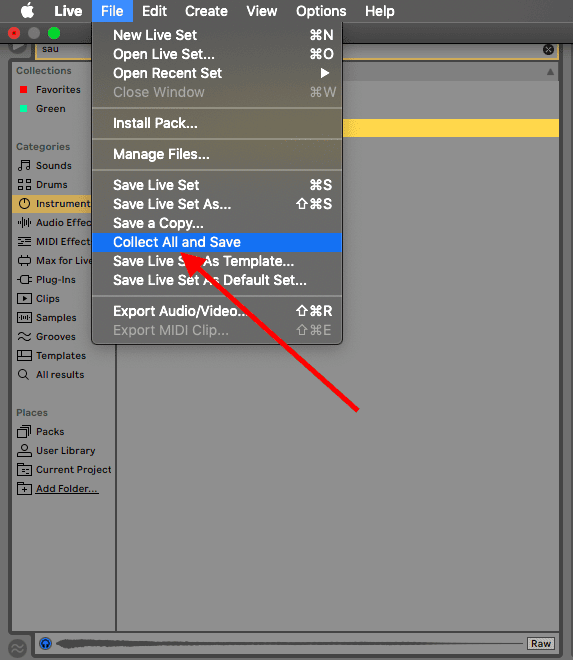
Crashing, Latency and Lagging
These issues come about mainly from the interaction between your computer and Live. There are specific minimum software and hardware requirements that are published on the official Ableton website to be able to mitigate these issues.
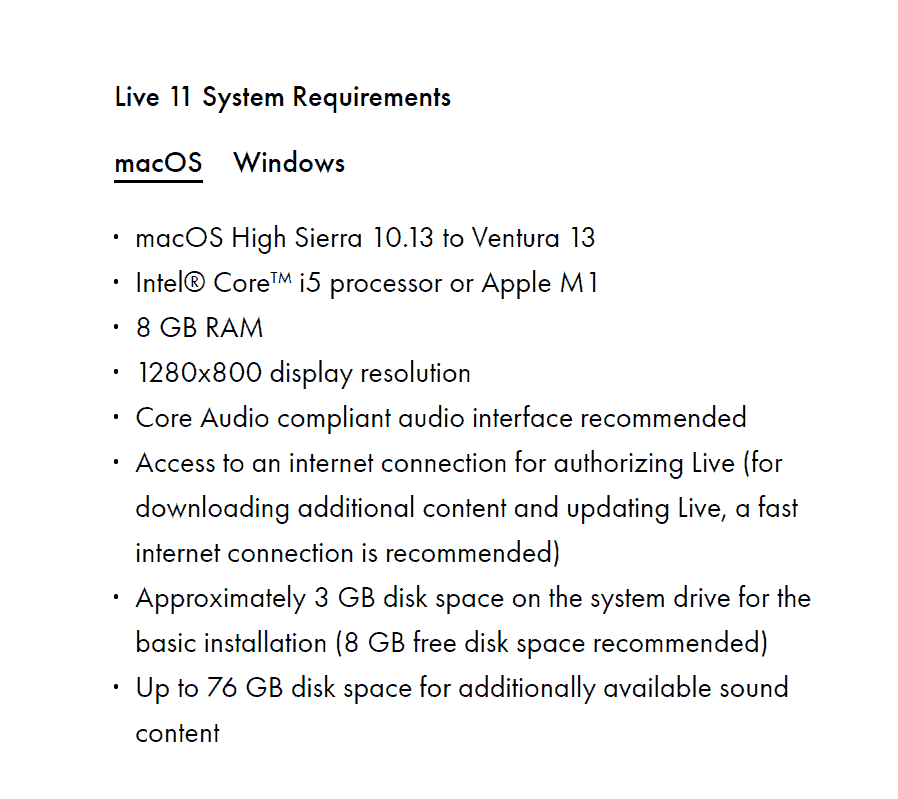
Knowing your computer’s and operating system’s specifications will help you bypass crashing, lagging and latency issues. Luckily I have provided tutorials to address Live’s opening, and crashing issues, sourced from my professional experience with Live.
Final Thoughts
Now, this article has been a generalist’s approach to Ableton Live’s learning curve. I have listed 5 main topics that could make Live easy or hard to learn and use. There are of course many techniques and processes that make Live hard to learn, and with these, I have written numerous tutorials to help you learn Live, and troubleshoot as well. There are things you may find out that I have not thought of or encountered, and this speaks to the versatility of Live. I always think that the best way to learn something is to immerse yourself and dive in head first. Most importantly though, have fun learning!
- How to Use Ableton Live’s Arpeggiator? - September 18, 2023
- How to Use the Piano Roll in Ableton Live + Shortcuts - September 18, 2023
- Ableton Arrangement View (Optimization & Usage) - September 16, 2023

